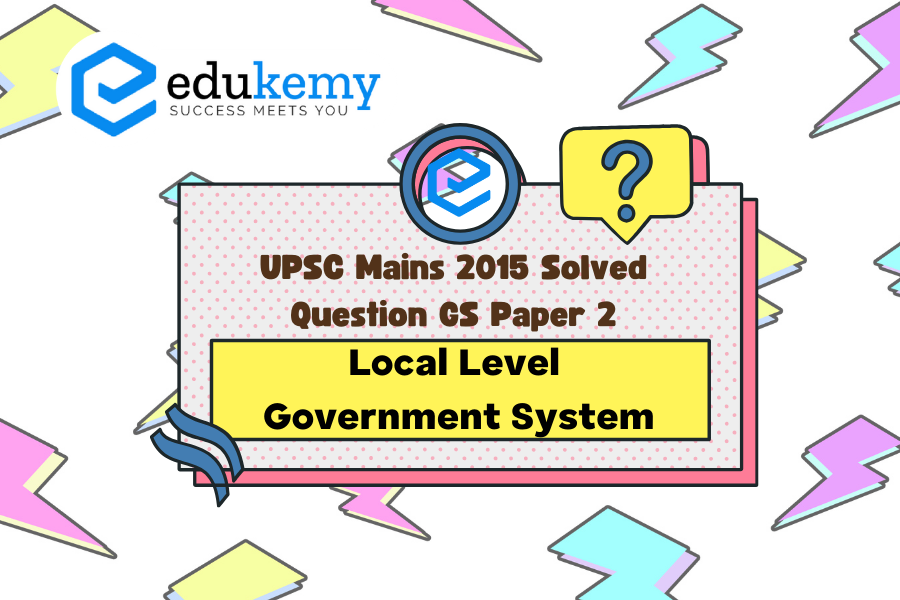In the absence of a well-educated and organized local-level government system, the institutions of ‘Panchayats’ and ‘Samitis’ in many regions have predominantly functioned as political entities rather than serving as effective instruments of governance. The foundational purpose of these decentralized structures was to empower local communities, enhance participatory decision-making, and address grassroots issues efficiently. However, the deficiency in educational qualifications and organizational capacities among the personnel involved has hindered the realization of these goals. Often, these institutions become entangled in political dynamics, diverting attention from the core responsibilities of governance. Lacking the necessary expertise, local leaders may struggle to formulate and implement effective policies, resulting in a governance vacuum at the grassroots level. Moreover, without a robust education system, the potential for citizen engagement and informed decision-making within these institutions is compromised. Therefore, the disconnect between the intended purpose and the actual functioning of ‘Panchayats’ and ‘Samitis underscores the imperative for educational and organizational reforms at the local level to transform these entities into true engines of effective governance.
Tag: Devolution of powers and finances up to local levels and challenges therein.
Contents
Decoding the Question:
- In the Introduction, briefly write about PRI and its adaptation in India.
- In Body, emphasis on both positives and negatives of Panchayati Raj.
- Conclude with Mahatma Gandhi’s aspiration for Panchayati Raj.
Answer:
Local governance refers to the processes through which public choice is determined, policies formulated and decisions are made and executed at the local level, and to the roles and relationships between the various stakeholders which make up the society. This requires an enlightened thought process which comes through education.
The term Panchayati Raj signifies the system of rural local self-government in India. While distributing powers between the Union and the States, the Constitution of India at Article 40 of Directive Principles of State Policy. The 73rd and 74th Constitutional Amendments ushered in the present phase where panchayats are described as institutions of local self-government and made penetration of democracy at grassroots level. In actual practice, at the operational level, they appear to have been saddled with a variety of problems.

Benefits of Introducing Education as a Requirement:
- It might help in bringing better-qualified people who have better scientific knowledge to tackle the everyday problems of agriculture and other infrastructural shortcomings.
- Educated and organized people may be able to incorporate worldwide practices, due to more acquaintance with communication technology, to develop their region.
- The minimum education criteria are necessary, as we wish to embark on e-governance as a mode of delivery and grievance redressal.
- It might be better to tackle and eradicate social evils like child marriage, female foeticide, and infanticide, which are largely prevalent, especially in states like Punjab, Haryana, and Rajasthan where this education criterion is adopted.
However, it may not be possible to make the local government system an effective system of governance even with an educated and organized system, because:
- The local government system is also facing some other major difficulties such as the devolution of powers and functions from states along with social prejudices.
- Making education the criteria for the selection of candidates may not be feasible until all people are educated. This rule may deprive a large section of the adult population of contesting the elections such as approx. 66% population becomes ineligible in Haryana with the law of minimum criteria of 10th standard for contesting the elections. This is against their right to contest elections and also against Articles 15 and 16.
It would be wrong to conclude that the Panchayati Raj Institutions have failed completely and that they have no future. there is no substitute for democratic decentralization like Panchayati Raj in a developing country such as India, because:
- Panchayati Raj in India, in terms of the size of the electorate, the number of grassroots institutions, the number of persons elected, and in terms of the empowerment at the grassroots of women, is the greatest experiment in democracy ever undertaken anywhere in the world or at any time in history.
- One of the key objectives of Panchayati Raj is to ensure that the process of planning for development in the country follows a bottom-up approach and commences at the grassroots level.
- The success of Kudumbashree which is a multi-faceted, women-based, participatory poverty eradication program jointly initiated by the Government of Kerala and the National Bank for Agriculture and Rural Development (NABARD).
- The Constitution (73rd Amendment) Act, 1992 provides for the reservation of women at all three tiers of Panchayati Raj Institutions i.e., Gram Panchayat, Panchayat Samiti and Zilla Parishad.
It is envisaged that one-third of members and chairpersons of Panchayati Raj Institutions should be women.
Mahatma Gandhi’s concept of democratic decentralization bears the stamp of his passionate belief in non-violence, truth, and individual freedom. He wanted to see each village a little republic, self-sufficient in its vital wants, organically and non-hierarchically linked with the larger spatial bodies, and enjoying the maximum freedom of deciding the affairs of the locality. The nation now has an opportunity to realize Mahatma Gandhi’s dream that the national plan becomes an integration of plans prepared with popular participation, starting from village panchayat levels.
In case you still have your doubts, contact us on 9811333901.
For UPSC Prelims Resources, Click here
For Daily Updates and Study Material:
Join our Telegram Channel – Edukemy for IAS
- 1. Learn through Videos – here
- 2. Be Exam Ready by Practicing Daily MCQs – here
- 3. Daily Newsletter – Get all your Current Affairs Covered – here
- 4. Mains Answer Writing Practice – here


